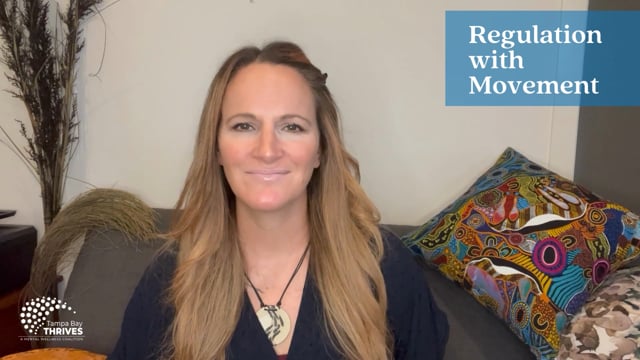Breathwork Regulation with Movement is a fantastic exercise to do when we’ve had a hard conversation and we’re feeling emotional. It’s also good for when we feel our mind is racing or feeling scattered. This breathing exercise, along with the movement, brings in emotional regulation as well as soothes our nervous system.
Secure yourself in a seated position, close the eyes and place both hands on the belly or chest. Recognize where you breathe more. If it’s belly then place hands on the heart – if it’s your chest then do belly – if you don’t know then do the belly. Slowly breathe in and out through the nose as you rock your body in a circular movement switching from inhale to exhale at your right side, and then left. Repeat about 20 times or until you feel better.
Breathwork regulation with movement is a technique that combines breathing exercises with movement. This practice has gained popularity in recent years due to its ability to reduce stress, anxiety, and promote relaxation. But what is the science behind its calming and relaxing nature?
In this article, we’ll explore the scientific principles that underlie breathwork regulation with movement and explain why it can be an effective tool for promoting mental and physical well-being.
Breathing and the Stress Response
Breathing is an essential function of the human body, and it plays a critical role in regulating our stress response. When we’re under stress, our body’s sympathetic nervous system is activated, which triggers the “fight or flight” response. This response leads to a variety of physical symptoms, such as increased heart rate, rapid breathing, and muscle tension.
When we breathe deeply and rhythmically, we activate the parasympathetic nervous system, which helps to counteract the stress response. This leads to a state of relaxation and calmness.
Breathwork Regulation with Movement
Breathwork regulation with movement combines the benefits of deep breathing with the physical movement of the body. This practice involves a variety of breathing exercises, such as diaphragmatic breathing and alternate nostril breathing, while simultaneously performing gentle movements, such as yoga poses or tai chi movements.
The combination of deep breathing and physical movement helps to promote relaxation and reduce stress and anxiety. It can also improve focus and mental clarity, as well as boost energy levels.
Scientific Evidence
Research has shown that breathwork regulation with movement can have a positive impact on mental and physical well-being. A 2019 study published in the Journal of Psychiatric Research found that practicing yoga, which incorporates breathwork regulation with movement, led to significant reductions in anxiety and depression symptoms.
Another study published in the Journal of Alternative and Complementary Medicine found that practicing tai chi, which also incorporates breathwork regulation with movement, led to improvements in mood, stress levels, and overall quality of life.
FAQ
Q: Can anyone practice breathwork regulation with movement?
A: Yes, breathwork regulation with motion can be practiced by people of all ages and fitness levels. However, it’s important to consult with a healthcare provider before starting any new exercise or breathing program.
Q: How often should I practice breathwork regulation with movement?
A: The frequency and duration of breathwork regulation with motion practice can vary depending on individual needs and preferences. Some people may find it helpful to practice daily, while others may practice a few times per week.
Q: What are some examples of breathwork regulation with movement practices?
A: Examples of breathwork regulation with movement practices include yoga, tai chi, qigong, and Pilates. These practices incorporate a variety of breathing exercises and gentle movements to promote relaxation and reduce stress and anxiety.
Q: Can breathwork regulation with movement be used as a standalone therapy for mental health conditions?
A: While breathwork regulation with movement can be a helpful tool for managing stress and anxiety, it’s not a substitute for professional mental health treatment. It’s important to work with a healthcare provider to develop a comprehensive treatment plan for any mental health conditions.








